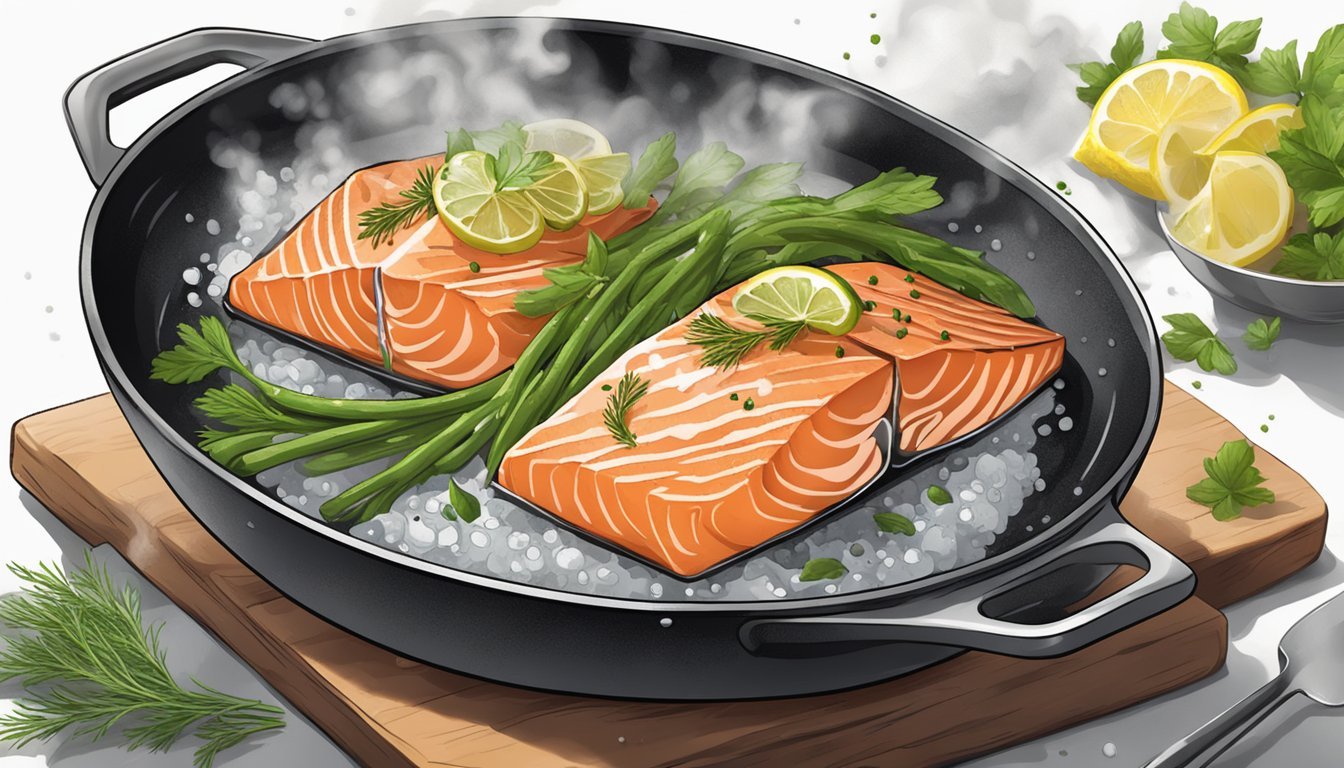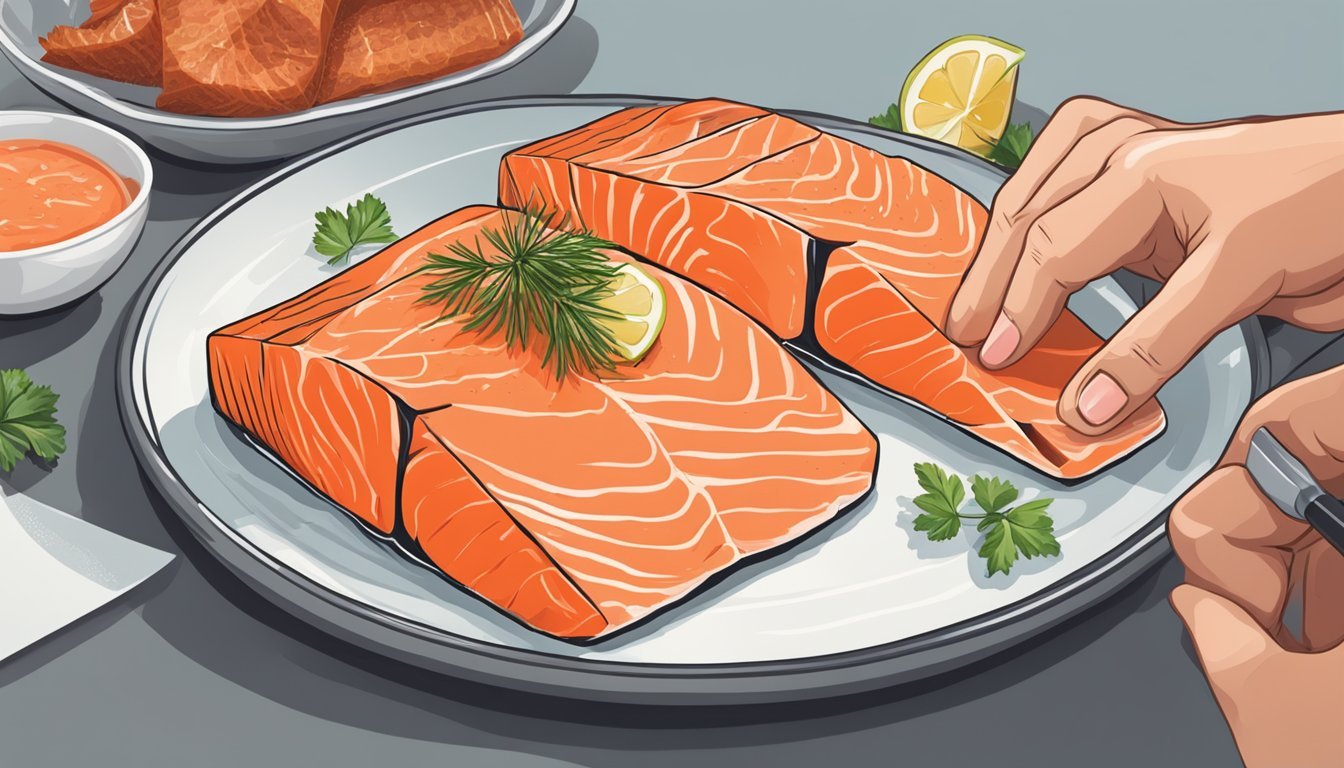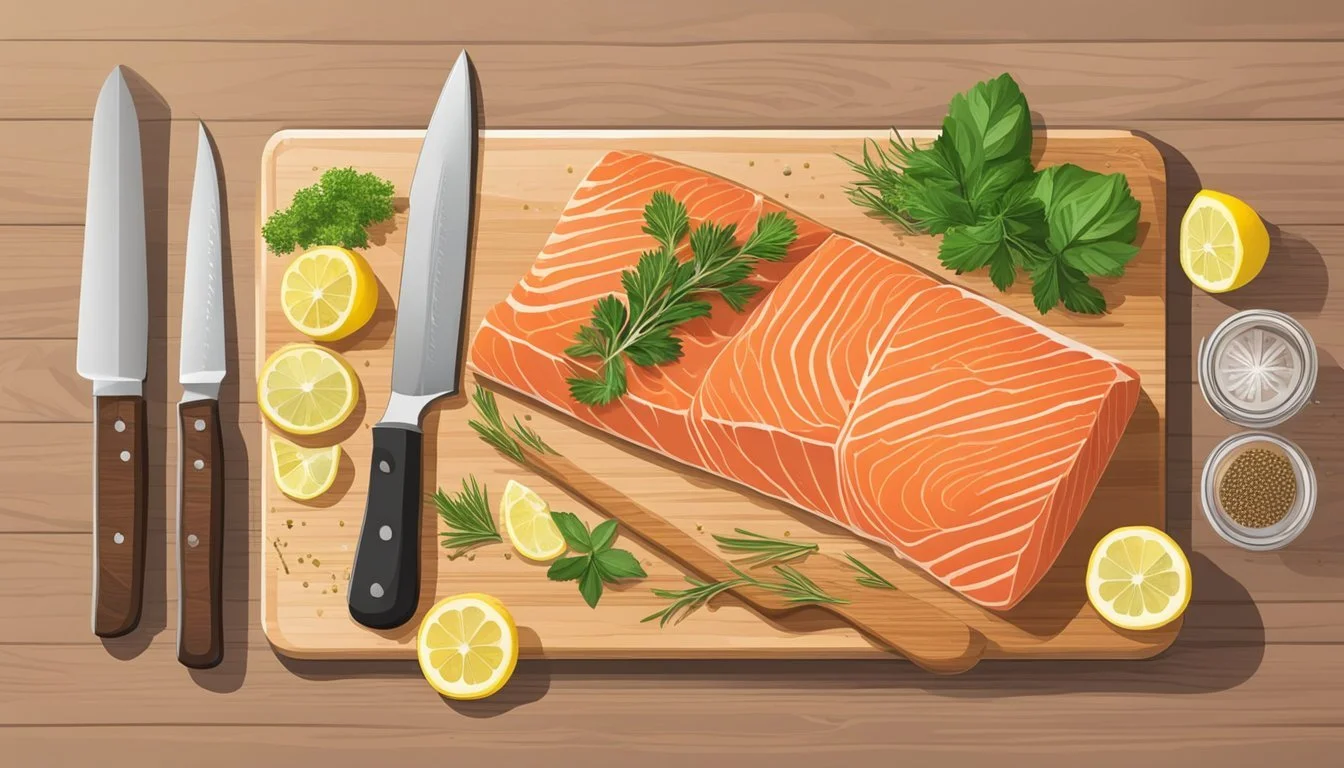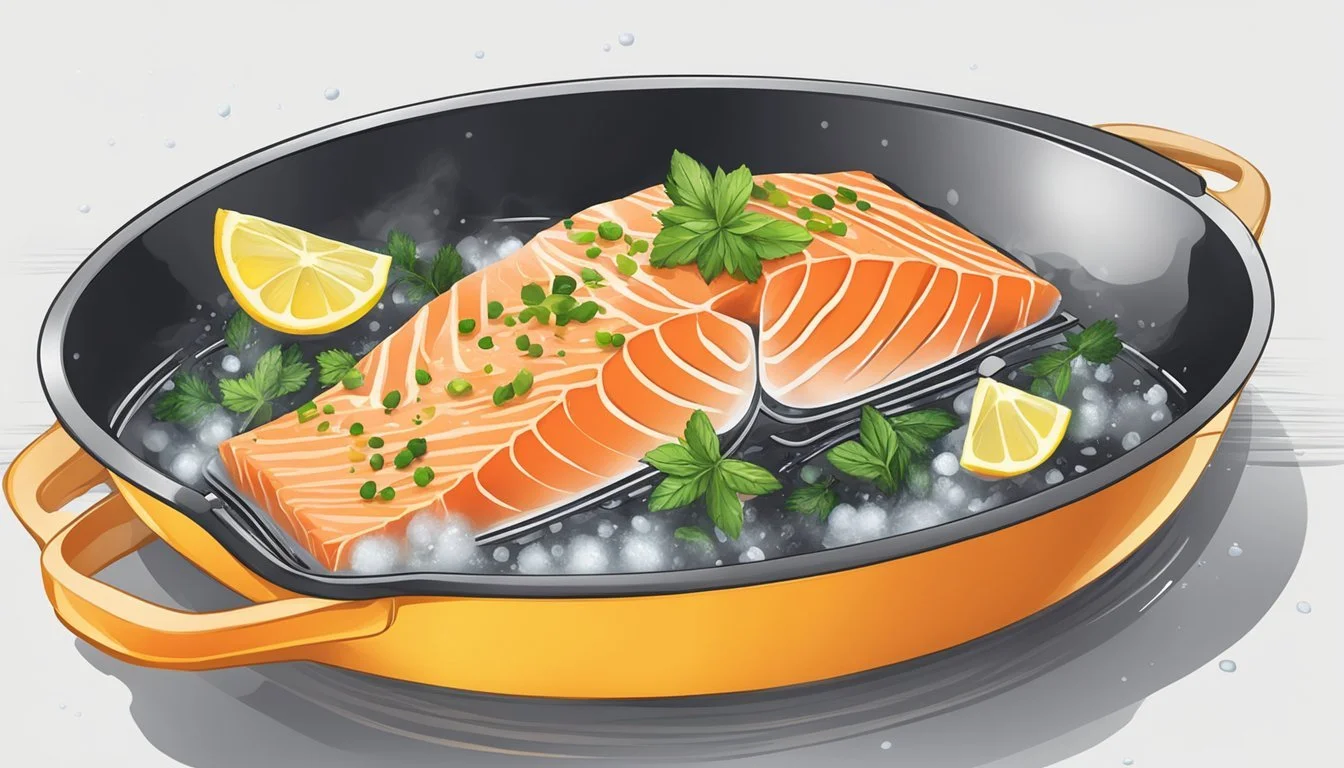Mastering the Art of Cooking Salmon
Techniques for Perfectly Flaky and Flavorful Fish
Salmon is a versatile and nutritious fish that can be prepared in numerous delicious ways. From baking to grilling, each cooking method brings out unique flavors and textures in this popular seafood. The key to perfectly cooked salmon lies in selecting fresh fish and mastering simple techniques that enhance its natural taste.
Cooking salmon at home doesn't have to be complicated. Whether you prefer crispy skin or flaky flesh, there's a method that suits your taste. Pan-searing creates a golden crust, while baking offers a hands-off approach for busy cooks. Grilling imparts a smoky flavor that complements salmon's rich taste.
With the right preparation, salmon can become a go-to option for quick weeknight dinners or elegant meals for special occasions. By learning a few basic cooking methods, anyone can transform this heart-healthy fish into a mouthwatering dish that's both satisfying and easy to make.
Selecting the Perfect Salmon
Choosing the right salmon is crucial for a delicious meal. Quality, freshness, and variety all play important roles in selecting salmon that will shine in your cooking.
Fresh vs. Frozen Salmon
Fresh salmon offers vibrant color and firm texture. Look for bright, moist flesh without browning or dry spots. The aroma should be mild and ocean-fresh, not fishy.
Frozen salmon can be an excellent option, often flash-frozen shortly after catch. It maintains quality and is convenient. When thawed properly, frozen salmon can rival fresh in taste and texture.
For both fresh and frozen, check the packaging date. Fresh salmon should be used within 1-2 days of purchase. Frozen salmon keeps for several months in the freezer.
Understanding Salmon Varieties
Atlantic salmon is farmed and widely available. It has a mild flavor and tender texture.
Pacific salmon includes several species:
King (Chinook): Rich, buttery flavor
Sockeye: Deep red color, intense flavor
Coho: Milder taste, often less expensive
Pink: Light color, delicate flavor
Chum: Firm texture, light flavor
Wild-caught salmon tends to have a more robust flavor than farmed varieties. It's often pricier but prized for its taste and nutritional profile.
Determining the Quality and Price
High-quality salmon has:
Vibrant color
Firm, springy flesh
No strong odor
Clear eyes (if whole fish)
Tight scales
Price varies based on type, origin, and whether it's wild or farmed. Wild salmon commands higher prices due to limited availability and perceived quality.
Farmed salmon is more affordable and available year-round. Look for responsibly farmed options to ensure quality and sustainability.
Consider the cut when buying. Fillets are versatile and easy to prepare. Steaks work well for grilling. Whole salmon offers the best value but requires more preparation.
Buy salmon from reputable sources. A good fishmonger can provide information on origin, freshness, and cooking tips.
Preparation Essentials
Proper preparation is crucial for achieving delicious salmon. Key steps include thawing frozen fillets safely, deciding whether to cook skin-side up or down, and seasoning effectively.
Thawing and Cleaning
For frozen salmon, thaw in the refrigerator overnight. This slow method preserves texture and flavor. If pressed for time, submerge sealed fillets in cold water, changing every 30 minutes until thawed.
Once thawed, rinse the salmon under cold water and pat dry with paper towels. Remove any remaining scales by gently scraping against the grain with a knife.
Check for pin bones by running your fingers along the fillet. Remove any found with clean tweezers or fish pliers.
Skin Side Up vs. Skin Side Down
Cooking skin-side down is often preferred. This method protects the delicate flesh and allows for easy flipping.
Start with a hot, oiled pan. Place the fillet skin-side down and cook for about 4-5 minutes until crisp.
For skin-side up cooking, useful for certain oven methods, place the fillet on a greased baking sheet. This approach can result in crispier flesh but may require careful handling to prevent sticking.
Seasoning the Fillets
Pat salmon dry before seasoning to ensure spices adhere properly. A simple combination of salt and pepper enhances the natural flavor.
For added depth, try a light coat of olive oil before seasoning. This helps create a golden crust when cooking.
Experiment with herbs like dill, parsley, or thyme. Lemon zest adds brightness. For a bolder taste, try a spice rub with paprika or cumin.
Avoid over-seasoning, as salmon has a delicate flavor. Apply seasonings evenly, gently pressing them into the flesh.
Let seasoned fillets rest at room temperature for 15-20 minutes before cooking. This allows flavors to meld and ensures even cooking.
Cooking Techniques
Salmon lends itself to a variety of cooking methods, each imparting unique flavors and textures. From quick stovetop searing to slow oven baking, mastering these techniques ensures perfectly cooked salmon every time.
Searing Salmon
Searing creates a crispy exterior while keeping the inside moist. Heat oil in a skillet over medium-high heat. Pat salmon dry and season with salt and pepper. Place fillets skin-side down in the hot pan. Cook for 6-8 minutes until the skin crisps.
Flip the salmon and cook for another 2-3 minutes. The flesh should be opaque and flake easily. For thicker cuts, finish in a 400°F oven for 5-7 minutes.
Searing works well for individual portions and retains the fish's natural oils. It's quick and ideal for weeknight meals.
Baking Made Simple
Baking salmon is foolproof and requires minimal hands-on time. Preheat the oven to 425°F. Line a baking sheet with foil for easy cleanup. Place salmon skin-side down on the sheet.
Season with salt, pepper, and herbs. Drizzle with olive oil or dot with butter. Bake for 12-15 minutes for medium-rare, or 15-20 minutes for well-done. The flesh should flake easily with a fork.
Baking is versatile and allows for various flavor combinations. It's perfect for cooking larger pieces or when preparing salmon for a crowd.
Exploring Poaching
Poaching yields tender, moist salmon. Fill a large skillet with 1-2 inches of liquid (water, broth, or white wine). Add aromatics like lemon slices, herbs, and peppercorns. Bring to a gentle simmer.
Carefully lower salmon fillets into the liquid. Cook for 8-10 minutes, or until the fish is opaque and flakes easily. Remove with a slotted spatula.
Poaching is ideal for those watching fat intake. It's a gentle cooking method that preserves the delicate texture of salmon.
Broiling Basics
Broiling creates a delicious caramelized exterior. Position an oven rack 6 inches from the heat source. Preheat the broiler. Line a baking sheet with foil and lightly oil it.
Place seasoned salmon skin-side down on the sheet. Broil for 6-8 minutes, or until the top is golden brown and the fish flakes easily. No need to flip.
Broiling is quick and adds a nice char to glazed salmon. Keep a close eye to prevent burning.
How to Grill Salmon
Grilling imparts a smoky flavor to salmon. Preheat the grill to medium-high. Clean and oil the grates to prevent sticking. Season salmon and brush with oil.
Place salmon skin-side down on the grill. Cook for 4-6 minutes per side, or until it reaches desired doneness. Use a wide spatula for flipping to keep the fillet intact.
For added flavor, try cedar plank grilling. Soak a cedar plank in water for an hour. Place salmon on the plank and grill with the lid closed for 12-15 minutes.
Grilling is perfect for outdoor cooking and adds a delightful smoky taste to salmon.
Mastering Heat and Timing
Precise temperature control and timing are crucial for perfectly cooked salmon. The right balance ensures a moist, flavorful result with the ideal texture.
Using a Thermometer
A reliable meat thermometer is essential for achieving perfectly cooked salmon. Insert the thermometer into the thickest part of the fillet. The ideal internal temperature for salmon is 63°C (145°F). This temperature ensures the fish is fully cooked while remaining moist and tender.
For accuracy, avoid touching the thermometer to the baking sheet or pan. Check the temperature a few minutes before the expected cooking time ends. This allows for adjustments if needed.
Some digital thermometers offer preset temperatures for different types of meat, including fish. These can be helpful for beginners.
High Heat vs. Medium-High Heat
The choice between high and medium-high heat affects cooking time and texture. High heat (400°F to 450°F) is ideal for achieving a crispy exterior. It works well for thinner fillets, cooking them quickly without drying out the interior.
Medium-high heat (350°F to 375°F) is better for thicker cuts. It allows for more even cooking throughout the fillet. This temperature range provides more control and reduces the risk of overcooking.
For pan-searing, start with high heat to create a golden crust. Then, reduce to medium-high to finish cooking the interior.
Preventing Overcooking
Overcooking is a common pitfall that can ruin salmon's delicate texture. To prevent this, set a timer and check the fish frequently. Remove the salmon from heat when it's slightly underdone, as it will continue cooking from residual heat.
Look for visual cues: the flesh should be opaque and flake easily with a fork. The center may still be slightly translucent, which is perfect for a moist result.
For fillets of varying thickness, consider cutting them into even portions before cooking. This ensures uniform doneness across all pieces.
Resting the salmon for 3-5 minutes after cooking allows the juices to redistribute, resulting in a more evenly moist fillet.
Advanced Cooking Methods
Elevating salmon preparation involves specialized techniques that enhance flavor and texture. These methods allow home cooks to achieve restaurant-quality results.
Creating the Perfect Crust
To create a crispy exterior, pat the salmon dry before cooking. Heat a heavy skillet over medium-high heat. Add oil with a high smoke point like grapeseed or avocado. Place the salmon skin-side down and press gently with a spatula for 30 seconds.
Cook for 3-4 minutes until the skin crisps. Flip and cook for 2-3 minutes more. For extra crunch, dredge the salmon in seasoned flour or cornmeal before pan-frying.
Another technique is to broil salmon on a preheated cast-iron skillet. This creates a golden crust while keeping the interior moist.
Utilizing Aromatics and Herbs
Infusing salmon with aromatics elevates its flavor profile. Create an herb butter by mixing softened butter with minced herbs like dill, parsley, or tarragon. Spread this under the skin before cooking.
For a Mediterranean twist, stuff the cavity with lemon slices, garlic, and rosemary sprigs. Wrap in parchment paper and bake for a fragrant, moist result.
Cedar plank grilling imparts a subtle smoky flavor. Soak the plank for 1-2 hours, then place the seasoned salmon on top. Grill over indirect heat for 12-15 minutes.
Incorporating Sauces and Glazes
A well-crafted sauce or glaze can transform salmon. For a sweet-savory option, brush the fish with a mixture of honey, soy sauce, and ginger during the last few minutes of cooking.
Create a tangy yogurt-dill sauce by combining Greek yogurt, lemon juice, chopped dill, and minced garlic. Serve alongside the cooked salmon.
For a rich finish, prepare a beurre blanc. Simmer white wine, shallots, and lemon juice until reduced. Whisk in cold butter pieces until emulsified. Drizzle over the salmon just before serving.
Serving and Presentation
Elevate your salmon dish with thoughtful presentation techniques. Proper plating, complementary side dishes, and appealing garnishes can transform a simple meal into a memorable dining experience.
Plating Techniques
Start with a clean, white plate to showcase the salmon's vibrant color. Place the seared fillet off-center, allowing space for sides and garnishes. For a restaurant-style presentation, use a fish spatula to transfer the salmon from pan to plate, preserving its shape.
Arrange vegetables in small clusters around the salmon. This creates visual interest and balance on the plate. For family-style serving, consider using a large platter. Line it with fresh herbs before placing the salmon on top.
Drizzle any pan sauce or flavored oil around the fish, not directly on it. This preserves the crispy skin and adds an artistic touch to the plate.
Accompanying Side Dishes
Choose side dishes that complement salmon's rich flavor. Roasted vegetables like asparagus, Brussels sprouts, or bell peppers add color and texture. Arrange them neatly beside the fish.
Starchy sides such as quinoa, rice pilaf, or roasted potatoes help absorb flavors and round out the meal. Spoon these into small mounds on the plate, using a ring mold for a polished look.
For a lighter option, serve a crisp salad with mixed greens, cucumber, and citrus segments. The acidity cuts through the salmon's richness, creating a balanced dish.
Garnishing for Visual Appeal
Fresh herbs are classic salmon garnishes. Sprinkle chopped dill, parsley, or chives over the fish and sides. For an elegant touch, place a small sprig of fresh dill or a single edible flower on top of the salmon.
Lemon wedges are both decorative and functional. Arrange them artfully on the plate, allowing diners to add a squeeze of citrus if desired. Alternatively, use thin lemon slices to create a scale-like pattern on top of the salmon before baking.
Consider adding texture with toasted nuts or seeds. Sprinkle sliced almonds or sesame seeds around the plate for a subtle crunch and visual interest. These elements tie the dish together and create an inviting presentation.
Health and Nutrition Insights
Salmon offers a wealth of nutritional benefits, making it a smart choice for health-conscious eaters. Its impressive nutrient profile supports various bodily functions and overall well-being.
Omega-3 Fatty Acids
Salmon is renowned for its high omega-3 fatty acid content. A 3.5-ounce (100-gram) serving of farmed salmon provides 2.3 grams of long-chain omega-3s, while wild salmon contains 2.2 grams. These essential fats play crucial roles in heart health, brain function, and reducing inflammation.
Omega-3s may help lower the risk of cardiovascular diseases and support cognitive performance. They're also important for fetal development during pregnancy and breastfeeding.
Regular salmon consumption can contribute significantly to meeting recommended omega-3 intake levels.
Calorie Count and Macronutrients
Salmon is a nutrient-dense food with a balanced macronutrient profile. A typical 4-ounce (113-gram) serving of cooked salmon contains:
Calories: 200-250
Protein: 22-25 grams
Fat: 13-15 grams
Carbohydrates: 0 grams
The high-quality protein in salmon supports muscle maintenance and growth. It's a complete protein, containing all essential amino acids.
Salmon's fat content is primarily heart-healthy unsaturated fats. These fats aid in the absorption of fat-soluble vitamins like A and D.
Despite its rich nutrient profile, salmon is relatively low in calories, making it suitable for various dietary needs.
Tips and Tricks
Mastering salmon preparation involves selecting proper equipment, managing fats wisely, and preserving freshness. These key elements can elevate your salmon dishes from good to exceptional.
Choosing the Right Cookware
Nonstick pans excel for delicate salmon fillets, preventing sticking and ensuring easy flipping. Cast iron skillets provide excellent heat distribution for pan-seared salmon, creating a crispy exterior. For baking, use a rimmed baking sheet lined with aluminum foil for easy cleanup.
A fish spatula, with its thin, flexible edge, is ideal for maneuvering salmon without breaking it. When grilling, cedar planks impart a subtle smoky flavor while keeping the fish moist.
Managing Cooking Fats and Oils
Use oils with high smoke points like grapeseed or avocado for pan-searing salmon at high temperatures. Olive oil works well for lower-heat cooking methods. Apply oil to the fish, not the pan, to prevent excess oil absorption.
Butter adds richness but can burn easily. For a buttery flavor without burning, try ghee or clarified butter. Alternatively, add a pat of butter at the end of cooking for flavor.
Maintaining Freshness
Fresh salmon should have a mild, ocean-like scent and firm flesh that springs back when pressed. Store fresh salmon in the coldest part of the refrigerator and use within 1-2 days of purchase.
For longer storage, freeze salmon immediately after buying. Wrap tightly in plastic wrap, then aluminum foil to prevent freezer burn. Thaw frozen salmon in the refrigerator overnight for best results.
To ensure food safety, always cook salmon to an internal temperature of 145°F (63°C). Use a meat thermometer inserted into the thickest part of the fillet to check doneness accurately.
After Cooking Care
Proper storage and reheating techniques are crucial for maintaining the quality and safety of cooked salmon. These practices help preserve flavor, texture, and nutritional value while preventing foodborne illness.
Proper Storage Techniques
Store cooked salmon in an airtight container in the refrigerator within two hours of cooking. Place it in the coldest part of the fridge, typically the back. Properly stored, cooked salmon will last 3-4 days.
For longer storage, freeze cooked salmon. Wrap it tightly in plastic wrap or aluminum foil, then place in a freezer-safe container or bag. Remove as much air as possible to prevent freezer burn. Label with the date and use within 2-3 months for best quality.
When freezing grilled salmon, ensure it's completely cool before packaging. This helps maintain its crispy exterior and prevents excess moisture from forming ice crystals.
Reheating Without Drying Out
To reheat salmon without drying it out, use gentle heat methods. For oven reheating, preheat to 275°F (135°C). Place the salmon on a baking sheet and cover with foil. Heat for 10-15 minutes or until it reaches an internal temperature of 145°F (63°C).
Microwave reheating is quick but can dry out the fish. Place salmon on a microwave-safe plate, add a tablespoon of water, and cover with a damp paper towel. Heat in 30-second intervals, checking frequently.
For stovetop reheating, use a non-stick pan over medium-low heat. Add a splash of water or broth to create steam, helping retain moisture. Cover and heat for 5-6 minutes, or until the salmon is pink and flakes easily with a fork.





